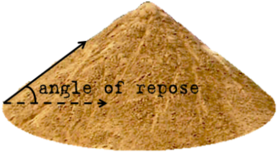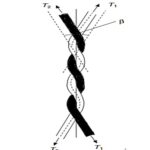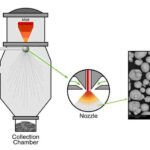Internal factors are those inherent to powders, or characteristic of the nature of powders. These include particle size, particle shape, and cohesiveness. In general, larger particles have higher angles of repose. However, very small particles may exhibit cohesiveness due to the electrostatic effect, which increases the angle of repose (Ref 31, 32, 33). Because spherical particles have a greater tendency to roll, they typically have smaller angles of repose than irregularly shaped particles.
External factors are introduced by the environment and may include the method of measurement or the presence of other materials (either solid or liquid). The effect of measuring method is clearly evident as discussed above. In general, the more momentum introduced by the measuring method, the smaller the angle of repose. As a consequence, the drained angle of repose is higher than that obtained from the heap formation method.
The angle of repose of loosely packed dry powder may be increased by compacting, as well as by introducing liquid to the powder. Figure 26 demonstrates the significant effect these factors have on the angle of repose (Ref 30, 35).


Fig. 26 Effect of moisture content on angle of repose of loose and compacted coal. Source: Ref 30
Frydman (Ref 36) reported that the angle of repose of potash pellets may be increased by more than 100% by applying a light spray of moisture to the material surface. The effect of the presence of another solid is shown in Fig. 25.


